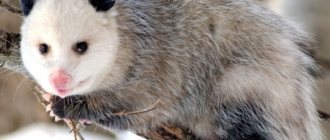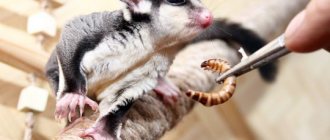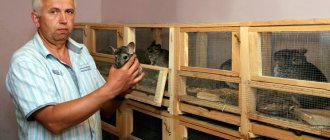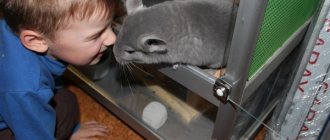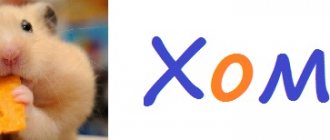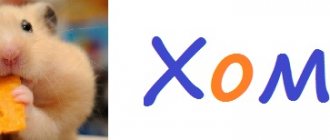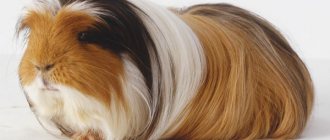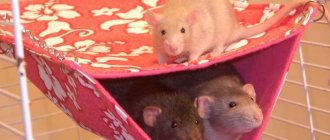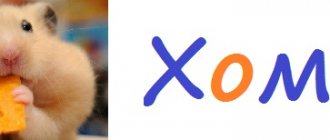The flying sugar glider (from the Latin petaurus breviceps) is a small inhabitant of eucalyptus forests that resembles a squirrel in appearance. The animal belongs to the genus of marsupial flying squirrels of the same family, in the scientific classification it is recorded as a sugar marsupial flying squirrel.
A few more names of the mammal are short-headed flying squirrel, dwarf flying squirrel, Australian flying squirrel. In the wild, the animal is distributed in Australia, New Guinea and the surrounding islands. It received the epithet “sugar” in its name due to its addiction to sweet foods: flower nectar and pollen, sweet juice of trees and fruits.
Sugar squirrel dimensions:
|
Characteristics of the sugar glider
The sugar glider is a small animal that lives in the thicket of the eucalyptus forest. Outwardly, he looks like an ordinary squirrel. The animal belongs to the genus of marsupial sugar flying squirrels. The animal is also called the short-headed flying squirrel, pygmy flying squirrel, etc. In the wild, the possum is found in Australia, New Guinea and their neighboring islands.
Interesting! It was not by chance that the characteristic “sugar” was added to the name - the animal loves to feast on sweet food: pollen and nectar from flowers, fruit and tree sap.
Mammal dimensions:
- The body is up to 21 centimeters in length (the tail is not taken into account - it can reach the same length and is characterized by mobility);
- The weight of an adult possum is up to 160 grams.
Characteristics:
- Lifespan - in the wild they do not live longer than 8 years due to the danger of their habitat; at home they can live up to 12-15 years.
- Cost - in Russia, a flying squirrel can be found in pet stores or from breeders for 3-15 thousand rubles.
- The need for vaccinations - animals are not given any vaccinations, not excluding rabies injections (there is no need even for anthelmintics).
- Need for walks - the sugar glider depends on society and needs affection, communication and walks (if it is locked up for a long time, the animal will become lethargic, depressed and can take out aggression on the owner).
Raising a possum, walks, toys
- To ensure your opossum lives a full life, let him out for walks . Do this every day. Of course, such walks are best carried out when the animal is active, namely at night. After all, during the day the pet will simply refuse to go for a walk.
- When you take a walk in the evening with your pet, entertain him. It’s good to place a vertical labyrinth or an “obstacle course” in the room where the animal will be. A decorative tree without foliage would also be a good idea.
Take regular walks
- Come up with something that will satisfy the opossum's natural needs. But the animal loves to climb, climb, and jump, using its own tenacious claws and elastic tail.
- The opossum loves to play with objects that are unfamiliar to it. His game is not complete without throwing and skating. He will also actively sniff and chew something . For such games, purchase any suitable toy for your pet, for example, a rubber toy, a ball with a rattle or a bell inside, which can be hung on a rope. Anything you can find at the pet store for cat play will work for your opossum.
- Show patience, affection, and love to your pet. Remember, a possum will never become tame just like that. Do not leave your pet alone in the apartment. He can cause mischief, but there is no need to bother your pet with your own attention. It is better to fence off the area where the animal will roam. If you do not do this, then close the doors in the room and stay there for a while. Believe me, after some time the possum will want to come up to you, get to know you, and even play.
- Some individuals love to have their fur scratched. Therefore, they come on their own for the next portion of affection. Teach your pet to come when called, for example, use some kind of treat for such purposes. You can also take a possum when you travel. It will sit on your head.
Do not forget that opossums cannot be physically punished or given other types of education. The animal will become aggressive, angry, and meeting your pet’s sharp teeth will not bring you much joy.
- We advise you to pay special attention to the following point - if your opossum gets bored and behaves indifferently, this is bad. Maybe your pet is worried about something, contact a veterinary hospital.
Behavior
Most of all, people are afraid that the animal will start biting - this is an unreasonable fear. The flying squirrel is not at all aggressive, but if it nevertheless begins to bite its owner, then there are always reasons for this:
- Shyness. This happens if the animal appeared in the house relatively recently and did not have time to adapt to the conditions. Or the owner disturbed a pregnant female, mother and cubs. In the first case, you should try to establish contact with the flying squirrel: sweeten it with a treat, while speaking in a calm and affectionate tone, try to caress it. In the second situation, it is better not to touch the animal at all. If the owner is afraid of being bitten, then you can wrap the hand with a rag or soft cloth.
- The possum tastes the owner or shows him its location - it’s not difficult to deal with it: put food on your hand so that the animal switches to it.
- The flying squirrel does not recognize the owner's scent or does not like the way it smells - the possum gets used to one distinct smell from a person, and when it changes, they stop recognizing the owner. It is recommended to stick to the same perfume and use the same soap. Another solution is to shower before interacting with the squirrel.
Another important aspect of behavior is receptivity to training. The flying squirrel can hardly be called a stupid animal, because it responds well to vocal intonation. A squirrel can easily be taught basic commands and come running when called.
The peculiarity of marsupial flying squirrels is barking at night. If this happens, then it's a matter of boredom. The squirrel calls its owner, especially if it is alone in the cage. It’s also about the mode of life - in the evening the mammal just begins to be active, and the person, most likely, is already preparing for bed. If possible, the animal should be petted and let out for a walk around the room. It wouldn’t hurt to buy him a friend and equip their home so that they have something to entertain themselves with.
Squirrels do not like cold conditions, so their activity decreases in rain or cold weather. They become lethargic and hibernate. This behavior in winter allows them to spend less energy when there are already problems with nutrition.
Characteristics
The main feature of the marsupial flying squirrel is a thin membrane stretching along the sides of the body from the wrist to the ankle. When the possum jumps, the membrane stretches and forms an aerodynamic surface. This allows the animal to glide over a distance of up to fifty meters . By relaxing or tightening the membrane, the possum regulates the direction of flight. His tail and legs also help him with this. Thus, marsupial flying squirrels fly from tree to tree.
Male sugar gliders mark territory with scent glands located on the chest, forehead and back of the body. Males are distinguished from females by a small bald spot on the forehead, in the place where the gland is located. Female animals have a pouch in the center of their abdomen, which is intended for bearing offspring.
Content
Keeping sugar squirrels at home is not easy and troublesome, but realistically it is the main desire. A person will have to follow the rules of life of the animal and care for it.
House maintenance (cons)
Flaws:
- The squirrel will not adapt to the routine of life in the house - it will continue to behave as it is used to in its environment. At night the animal does not like to sleep, but will start jumping around the cage, making noise or rattling everything. Therefore, for its maintenance it is recommended to allocate a separate room, which is located at a distance from the bedroom.
- These animals are not famous for cleanliness and go to the toilet wherever they have to. In nature, they jump through trees, practically without touching the ground - and urinate on the fly. At home, their behavior will not change: they will stain furniture, walls and even the owner with feces.
- The animal loves to mark its territory using secretions from the glands. They have a rather pungent smell - they practically do not wash off from clothes, you just have to get used to them.
- Children should not be allowed alone near possums. This can harm both the child and the animal. The squirrel will begin to bite if you hold it in your hand. The baby loves to run around the owner, as if through the branches of a tree, leaving deep scratches with his claws that take a long time to heal.
In wild nature
Possums live in small groups that can number up to 7 adults and babies of the current litter. There is one male - the dominant one, who marks his territory and the flock with the help of special glands. They will drive out alien squirrels with a different smell from their lands.
Under natural conditions, animals hunt spiders, insects, small birds and other small animals, as well as sweets - nectars, juices, etc.
Reproduction
Features of sexual development
Breeding sugar flying squirrels at home is a rather responsible and expensive task. It is difficult to call possum breeding a profitable business. It requires a lot of time (the female takes care of the cubs for more than 4 months) and the presence of an isolated and spacious room.
Many breeders say that females who are expecting or nursing offspring become much less friendly and affectionate. For various reasons (stress, genetic predisposition, early pregnancy, and many others), females can abandon their own cubs or even eat them. Therefore, before deciding to purchase a pair of opposite sexes, you should carefully think through all the nuances of the future keeping of the animals.
Males and females reach puberty at different ages: males starting at 4 months, females at six months. However, parental responsibilities should be assigned to animals no earlier than a year. The mating season usually occurs in June-July. Animals bear offspring 1–2 times a year. For mating, you should not choose individuals that are in a related relationship - this can lead to pathologies in the cubs.
Pairing
Mating occurs within 24 hours after the female starts estrus. She may behave excitedly, make calling sounds, and refuse food. The male looks quite aggressive from the outside: he bites the back of his resisting female friend and even inflicts wounds on her. But for possums this is normal behavior. The wound, if it appears, should be treated to prevent infection. If the future father continues to disturb the female, she needs to be placed in another cage until she recovers completely.
Pregnancy and childbirth
Pregnancy lasts 15 – 16 days. There is no need to remove the male from the cage during pregnancy. He does not interfere with his friend, and after giving birth he also helps her care for her offspring.
Feeling the approach of childbirth, the female carefully licks the pouch on her stomach, and after giving birth, she also licks the path for the offspring - from the genitals to the pouch. The tiny squirrel covers this path on its own in literally 5 minutes.
Despite the fact that there are 4 nipples in the bag, the offspring usually does not exceed 1 - 2 babies. The possum stays in the pouch for about 9 - 10 weeks, without tearing itself away from the mother's nipple - it swells in its mouth, and the baby literally sticks to it.
During the period of feeding “babies”, the female’s diet should be increased - at the rate of plus 50% for each cub.
After some time, the babies move from their mother's pouch to their parents' backs, and then become independent. At the age of 4 months they can already be separated from the female.
Care
Proper care will ensure a happy life and comfortable conditions for the possum. If you don't follow the rules, the animal will become depressed and aggressive.
Feeding
Health, and therefore the length of life and the mood of the animal, depend on proper nutrition. Diet affects smell and even aggressiveness.
Daily diet
The following rules will help you create a feeding plan:
- Fruits are the most important component in the flying squirrel’s diet; they should be about 70% of the total diet;
- The remaining 30% are protein components;
- It is recommended to minimize phosphorus concentrations and provide more calcium;
- Watch out for sweets - it should be a delicacy, not an everyday occurrence;
- It is allowed to diversify the food with meat (boiled turkey or chicken);
- Live food (insects) is also needed;
- Once every few days the possum is given honey - this affects its metabolism.
What is possible
Fruits and vegetables are cut into large pieces - this makes it easier to take the paws. The squirrel doesn't like small pieces.
Insects:
- Worms;
- Zoophobas;
- Banana crickets.
Dairy products:
- Cottage cheese;
- Kefir;
- Yogurt.
You can also give baby food, cereals and meat (chicken, turkey). These are all sources of protein. The diet should also contain carbohydrates - these are fruits (dried, pureed, etc.).
Nuts, honey, and drops are suitable as treats.
What not to do
Human and too fatty food is not suitable for the possum. More specifically, it is prohibited to give:
- Bird food;
- Grapes and raisins;
- Lettuce, cheese;
- Excessive amounts of nuts.
Housing
You need to understand whether you plan to buy one or two animals at once. If the owner does not have time to deal with the squirrel for several hours every day, then it is better to choose the second option. More often, possums of different sexes are purchased to form a pair.
The housing should be located in a slightly dark place, away from the bedroom - this will help to avoid sounds at night. The cage also needs to be protected from drafts, heat sources, direct rays of the sun, plants, furniture - everything that the squirrel can reach. Content temperature is from 20 to 30 degrees Celsius. The tray should contain wood filler to absorb the smell.
Fur and claw care
Although the flying squirrel is unclean, they take a little care of themselves - like cats, they lick themselves, cleaning their fur with their claws and tongue, so the owner does not have to painstakingly care for the fur.
Swimming is not permitted. The squirrel is not afraid of water, but is not adapted to swimming and, without proper supervision, can drown even in a small basin or jar. If it happens that the baby gets very dirty with something, you need to carefully wipe him with a damp cloth or cotton towel soaked in boiled water. After completing the procedure, the animal must be dried completely and avoid being in a cool room or in a draft.
Sometimes owners leave a sand bath in the cage for bathing - but this is not necessary. Squirrels don't even climb there.
The animal sharpens its claws on its own - on imitation wooden branches that should be in the cage. If for some reason they have grown too much, they will still have to be cut off using a nail clipper (like for cats or dogs).
Breeding
Breeding possums is far from the most profitable and easy business. There are a number of good reasons for this:
- To maintain a pair, decent conditions are required (food, care, cage);
- a pregnant female requires additional food costs;
- finding future owners is not an easy task;
- veterinary care is very expensive;
- the character of pets engaged in raising offspring changes for the worse in relation to humans;
- Caring for a couple requires isolated space and a lot of time.
Cell
For one individual you will need a cage with a tray, an aviary, a terrarium or a display case with dimensions of 50-50-80 cm, for two 140-50-80 cm. It is better to provide the largest possible conditions. If a cage is used as a container, the bars should not be narrower than 1 cm.
Reference cell
What should be in the cage
Be sure to have a drinking bowl and several feeders. It is important that the squirrel is habituated, otherwise it may die of thirst. Small metal or ceramic feeders are required.
Inside the cage you need climbing structures, a house, branches, pipes, etc.
What shouldn't happen
There should be no materials inside the cage that could poison the animal. Curiosity and constant contact can cause a squirrel to try something, which can affect its health.
How to care for an opossum at home?
- An opossum, like a cat, can wash itself with its paws. But, unlike cats, the former love to swim.
- By the way, if you suddenly notice that your pet smells unpleasant, it means he may be sick . In this case, you will have to urgently show the animal to the veterinarian, since a healthy possum never produces foreign odors.
- If you do not plan to breed opossums, castrate the male. In this case, its natural smell will be significantly reduced.
- How to care for an opossum at home? The main hygiene processes for an opossum are as follows - just clean your pet’s cage more often. Do this at least once every 7 days.
Diseases
Possums suffer from a fair number of ailments that affect their lifespan. Most often they are affected by metabolic bone disease associated with injury and poor nutrition. Possible diarrhea from overloading the stomach with fruit or due to parasites. Any treatment is carried out under the supervision of a veterinarian.
Irina Ivanishchena
I am engaged in professional breeding of hamsters and rats on an ongoing basis. I know something about them that most people don’t know. Always open to constructive discussion
Post Views: 3,076
Let's summarize
As we can see, this sugar animal has many positive qualities, especially for keeping it at home. But unfortunately, this species is now listed in the Red Book, so people are trying to take care of them and their population as much as possible.
This cute animal is distinguished primarily by its unusual affection for its owner. Indeed, his behavior is very similar to that of a dog.
Therefore, as soon as the possum feels that you are not a threat to him, but, on the contrary, a faithful friend, a master who feeds and takes care of him, he will calmly become your faithful partner.
Drawing a conclusion, we can safely say that this furry animal will become an excellent pet, with the right approach to it.
How much does it cost and at what age is it better to take a baby?
Experts unanimously recommend taking home a small opossum aged one and a half to two months . Since the approach to caring for such animals can be different, it will be better if the baby has not yet formed his own ideas about how his life will go. Of course, we are still not talking about a white sheet of paper on which you can write whatever you want, but still it will be much easier for a young animal to adapt to the circumstances offered to it than for an adult.
Important! Pet stores typically sell animals that have never left their cages. They have already developed the mentality of living in harsh conditions of captivity. Such animals do not make tame and affectionate creatures, this applies not only to opossums, but also to other pets - chinchillas, chipmunks, parrots.
When it comes to how much a possum costs, it all depends on the breeder. On average, the price for a young animal is 40–50 US dollars ; in a prestigious store it can be significantly higher, sometimes 90 or even 120 USD. e. Directly from the breeder, if you’re lucky, you can buy an animal cheaper, and it will be much easier to tame a baby animal that is already accustomed to human hands.
